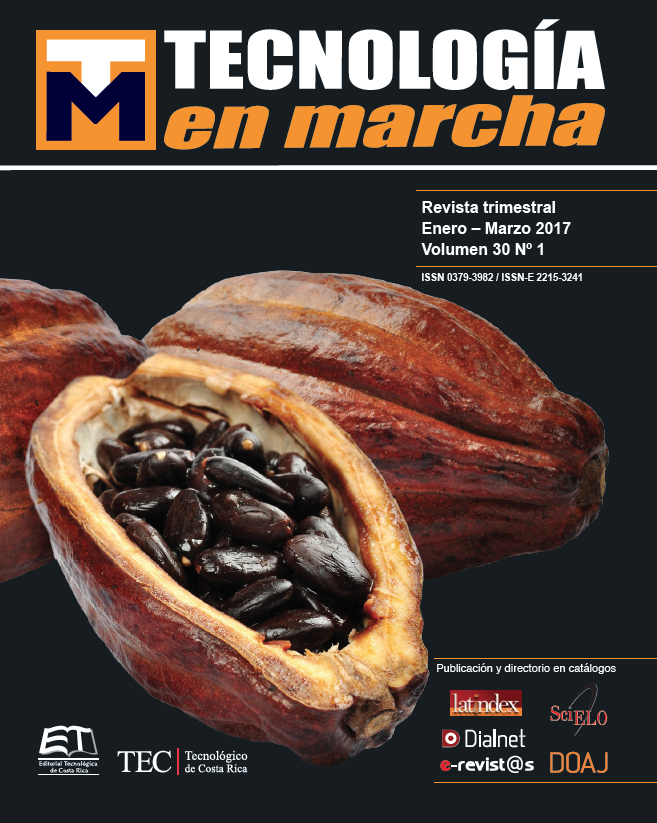Development of a reliability model for performance analysis of bridges. A case study in Costa Rica
Main Article Content
Abstract
In 2013, as part of the e-bridge research project developed by the Institute of Technology of Costa Rica (TEC), a series of non-destructive loading tests were performed in a bridge located over the Purires River, San Isidro de El Guarco, Cartago using a Wireless Sensor Network (RIDS) to collect strain data. The research project intends, among other objectives, to develop a reliability model to assess the structural performance of bridges and providing key output variables to estimate reliability parameters such as failure probability, survival probability and reliability index. The latter information would be important to support a decision making system in terms of a bridge maintenance program.
In this paper, the results obtained using three static non-destructive loads over the Purires Bridge are discussed. Statistical techniques such as goodness of fit tests and Monte Carlo simulation were used to calculate critical structural and reliability indicators. Two of the static tests passed the international references in terms of reliability index; however, one of the statics loads (Case I) failed the analysis reporting a failure probability of 0.047 with a low reliability index of 1.667. It is worthwhile to mention that the same bridge suffered a moderate failure in a critical beam which would help to validate the methodologies and tools used in this project.
Article Details
Los autores conservan los derechos de autor y ceden a la revista el derecho de la primera publicación y pueda editarlo, reproducirlo, distribuirlo, exhibirlo y comunicarlo en el país y en el extranjero mediante medios impresos y electrónicos. Asimismo, asumen el compromiso sobre cualquier litigio o reclamación relacionada con derechos de propiedad intelectual, exonerando de responsabilidad a la Editorial Tecnológica de Costa Rica. Además, se establece que los autores pueden realizar otros acuerdos contractuales independientes y adicionales para la distribución no exclusiva de la versión del artículo publicado en esta revista (p. ej., incluirlo en un repositorio institucional o publicarlo en un libro) siempre que indiquen claramente que el trabajo se publicó por primera vez en esta revista.

